NATIONAL: DAILY NEWS AND HEADLINES TODAY 13 APRIL, 2024 (TGN):
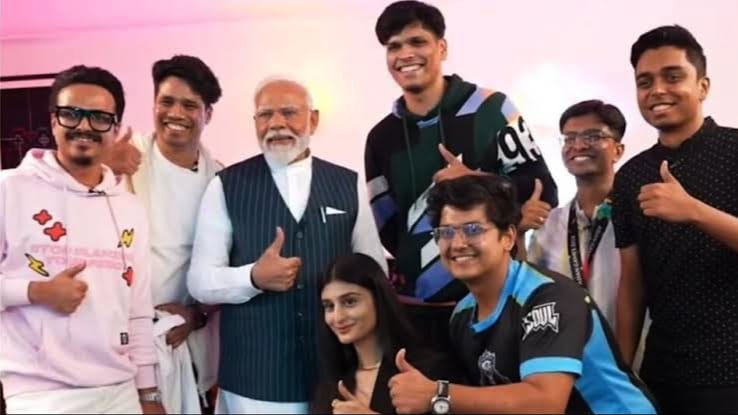 →PM Narendra Modi interacted with Gamers today. He also mentioned his viral “yeh PUBG wala hai kya” moment from 2019. PM couldn’t control his laughter on hearing the term ‘noob’ (A player who can’t play well), and took a swipe at his opponent (hinting at Congress leader Rahul Gandhi). The gamers not only interacted with PM Modi, but also played video games with him, Gamers gave him the title of “NaMo OP”, where ‘OP’ means “overpowered”.PM immersed himself in the zeitgeist of contemporary influence of a gamer Animesh ‘Thug’ Agarwal.
→PM Narendra Modi interacted with Gamers today. He also mentioned his viral “yeh PUBG wala hai kya” moment from 2019. PM couldn’t control his laughter on hearing the term ‘noob’ (A player who can’t play well), and took a swipe at his opponent (hinting at Congress leader Rahul Gandhi). The gamers not only interacted with PM Modi, but also played video games with him, Gamers gave him the title of “NaMo OP”, where ‘OP’ means “overpowered”.PM immersed himself in the zeitgeist of contemporary influence of a gamer Animesh ‘Thug’ Agarwal.
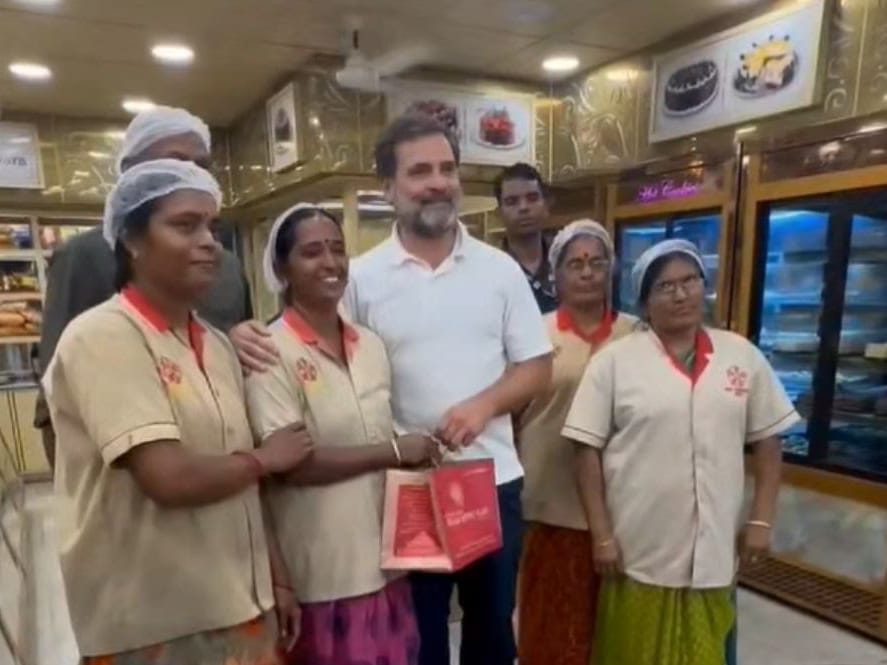 →Congress leader Rahul Gandhi is busy campaigning for his party across the country with his INDIA allies as they are ready to take up the fight against Prime Minister Narendra Modi-led NDA.Gandhi relished over the renowned sweet ‘Mysore Pak’ before buying it for his brother and DMK President MK Stalin when he visited a sweet shop in Tamil Nadu’s Singanallur district, today.
→Congress leader Rahul Gandhi is busy campaigning for his party across the country with his INDIA allies as they are ready to take up the fight against Prime Minister Narendra Modi-led NDA.Gandhi relished over the renowned sweet ‘Mysore Pak’ before buying it for his brother and DMK President MK Stalin when he visited a sweet shop in Tamil Nadu’s Singanallur district, today.
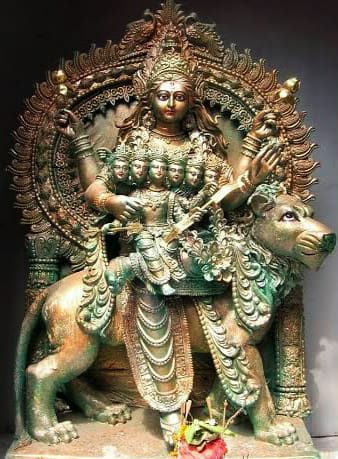
→Chaitra Navratri, one of the most prominent Hindu festivals, commenced on April 9 and will continue till April 17. Today, April 13 marks the 5th day of the Chaitra Navratri and on this day, Goddess Skandamata (a form of the Goddess Durga).
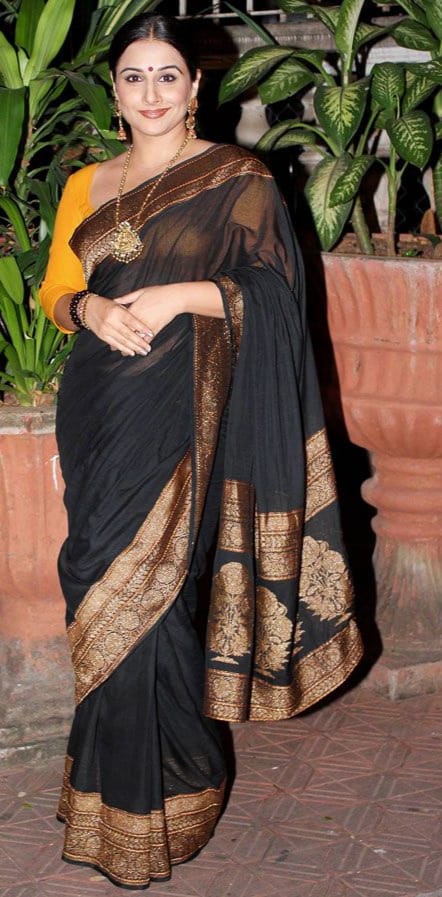
→Vidya Balan is all set to feature in ‘Do Aur Do Pyaar’. The film is a celebration of love, laughter, and the complexities of modern relationships and is slated to hit the Silver Screen on April 19.Vidya Balan married producer Siddharth Roy Kapur in 2012.

→Vodafone Idea, India’s third major telecom sector player, is looking to raise up to Rs 20,000 crore crore via a follow-on public offer (FPO), company in the early hours of Friday, informed the exchanges.Vodafone Idea’s FPO will open on April 18 and close on April 22. The anchor investor offers will be approved on April 16, the company said in an exchange filing.The board has approved the adoption and filing of the Red Herring Prospectus (RHP) for the same with the Registrar of Companies, Gujarat, the exchange filing said.
→Tata Consultancy Services (TCS), India’s largest IT services company, has announced annual salary hikes for its workforce, with top performers receiving double-digit increments. Its Chief HR Officer Milind Lakkad said salary hikes will be in the range of 4.5-7 per cent based on performance, with high-performers receiving double-digit increases.
→National Stock Exchange (NSE) cautioned investors against deepfake videos of its MD and CEO Ashishkumar Chauhan giving stock recommendations. In a statement, NSE said it has observed the use of the face or voice of Chauhan and the NSE logo in a few investment and advisory audio and video clips falsely created using AI technology.
→In the last one month, InterGlobe Aviation, the operator of IndiGo Airlines shares has jumped 22 per cent, taking the airline’s mcap to over Rs 1,46,000 crore ($17.5 billion) in total value. IndiGo Becomes World’s 3rd Largest Airline By Market Cap, Shares Jump To Record High.
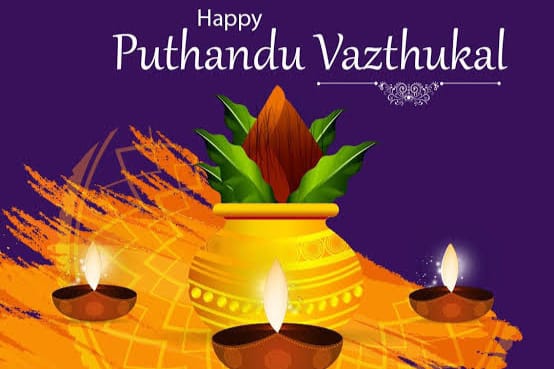
→Puthandu is a significant festival celebrated in Tamil Nadu and this special occasion is eagerly awaited by the Tamil people. Puthandu is the Tamil word for new year and the event marks the first day of Chitterai, a Tamil calendar month. Under the Tamil calendar, Sankranti falls on a day that is celebrated as New Year’s Day if it occurs after dawn and before sunset, and as Puthandu if it falls after sunset. It is Ugadi in Telangana, Karnataka and Andhra Pradesh, or Poila Baisakh in West Bengal, this is the start of the harvest season and is celebrated with great pomp. Puthandu will be observed on April 14 this year.
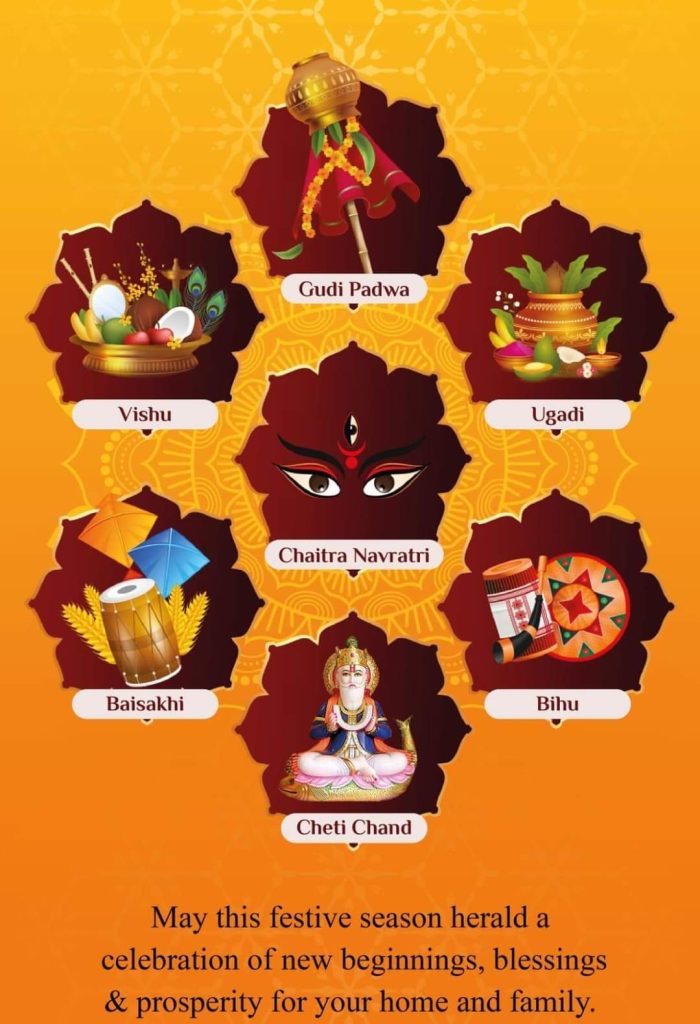 → President Droupadi Murmu extends greetings to the nation on the eve of Vaisakhi, Vishu, Bishub, Bahag Bihu, Poila Boishakh, Vaishakhadi and Puthandu.These festivals will be celebrated on the 13th and 14th of this month.President expresses gratitude towards the hard work of the farmers across the country.The president also wishes that these festivals bring prosperity and peace in everyone’s life.
→ President Droupadi Murmu extends greetings to the nation on the eve of Vaisakhi, Vishu, Bishub, Bahag Bihu, Poila Boishakh, Vaishakhadi and Puthandu.These festivals will be celebrated on the 13th and 14th of this month.President expresses gratitude towards the hard work of the farmers across the country.The president also wishes that these festivals bring prosperity and peace in everyone’s life.
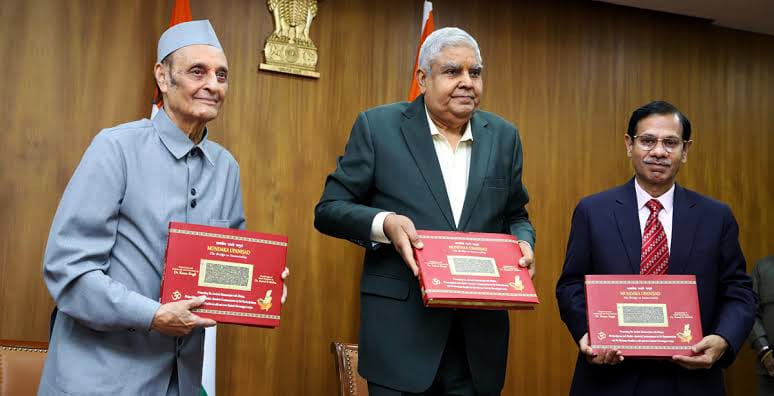
→ Vice President Jagdeep Dhankhar presided over the release of the book “Law and Spirituality: Reconnecting the Bond” at Vice-President’s Enclave in #NewDelhi.
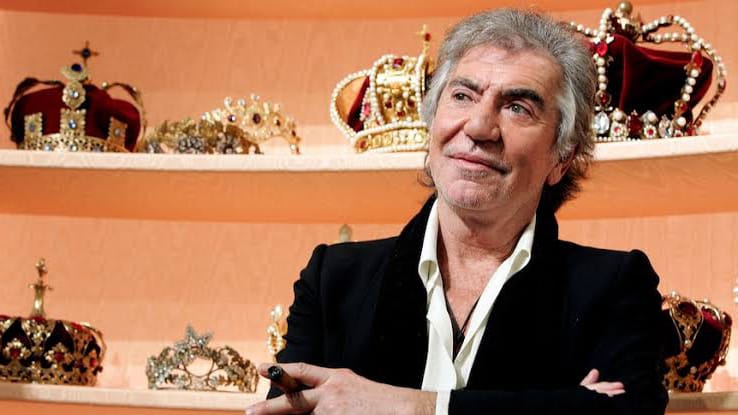
→ Italian fashion designer Roberto Cavalli, whose penchant for python and flamboyant animal prints made him the darling of the international jet set for decades, died Friday at 83, the luxury company said.
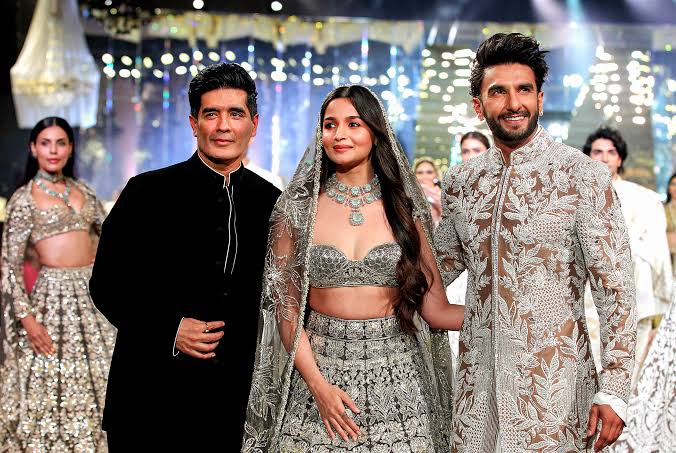 →Inspired by the timeless elegance of Banarasi weaves, renowned couturier Manish Malhotra will be showcasing his latest collection on April 14, 2024, in Varanasi.
→Inspired by the timeless elegance of Banarasi weaves, renowned couturier Manish Malhotra will be showcasing his latest collection on April 14, 2024, in Varanasi.
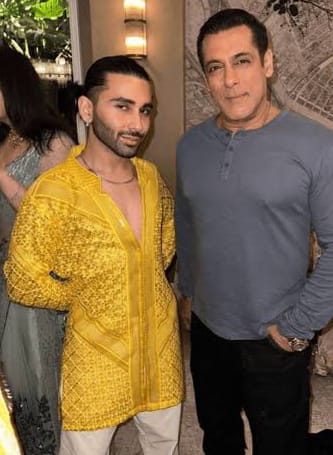
→Orry, the internet sensation better known as Orhan Awatramani, lit up Sohail Khan’s Eid soirée in Mumbai. The festivities, held on April 11, were a spectacular celebration of Eid-Ki-Daawat, and Orry didn’t miss a beat in sharing glimpses of the gala on his Instagram stories yesterday.
→PUNE: A frozen dead rat was found in a block of ice in a chiller allegedly sourced from an ice-manufacturing factory in Pune’s Junnar on Wednesday. This incident raised several questions about hygiene and public health.
→On April 13, 2024, gold prices experienced a fall in India largely. However, the fundamental price for 10 grams remained close to Rs 66,500. A thorough analysis of the market revealed that the average price for 10 grams of 24-carat gold was approximately Rs 72,550, while 22-carat gold averaged around Rs 66,500.
→Today same time, the silver market displayed an upward trend, reaching Rs 85,500 per kilogram.
→As of April 13, the price of petrol in Mumbai continued to exceed the Rs 100 mark, reaching Rs 104.21 per litre, while diesel was priced at Rs 92.15 per litre.
→Bhubaneswar celebrates its 76th Foundation Day today. On April 13, 1948, the first Prime Minister of our country, Pandit Jawaharlal Nehru had laid the foundation stone of the Capital City.
→ Supreme Court to host 2-day conference on technology, judicial dialogue with Singapore.
→ Nearly 400 Congress workers in Rajasthan resigned from primary membership of the party on Friday.
→ Cash, drugs, liquor and other precious metals worth Rs 662 crore have been seized in Rajasthan since the Model Code of Conduct (MCC).
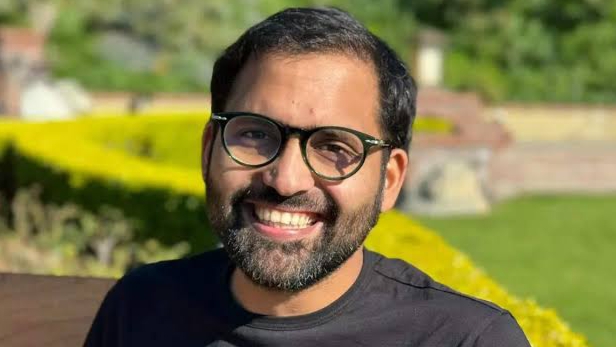
→Gopichand Thotakura to become 2nd Indian to fly to space after wing commander Rakesh Sharma. He will travel to space as part of the crew for Amazon founder Jeff Bezos’ space company Blue Origin’s New Shephard-25 (NS-25) mission. 3 journalists injured in Israeli shelling in Gaza Strip.
→ Defence Mministry issues tender to HAL for procurement of 97 Tejas Mk-1A fighter jets.
→ US President Biden says he expects Iran to attack Israel ‘sooner than later’.
→ UK climate change minister Graham Stuart resigns: Reports.
→ UK foreign office adds Pakistan to its list of countries “too dangerous to travel”.
→ Historic Hindu temple demolished in Pakistan’s Khyber district.
ED attaches over Rs 150-cr worth assets linked to ex-West Bengal Minister Jyoti Priya Mallick, TMC leader Shankar Adhya in PDS ‘scam’ case.
→ India’s forex reserves jump USD 2.98 billion to hit a fresh peak of USD 648.56 billion: RBI.
→ Rupee falls 12 paise to close at 83.43 (provisional) against US dollar.
→ Lucknow Super Giants elect to bat in IPL match against Delhi Capitals in Lucknow.
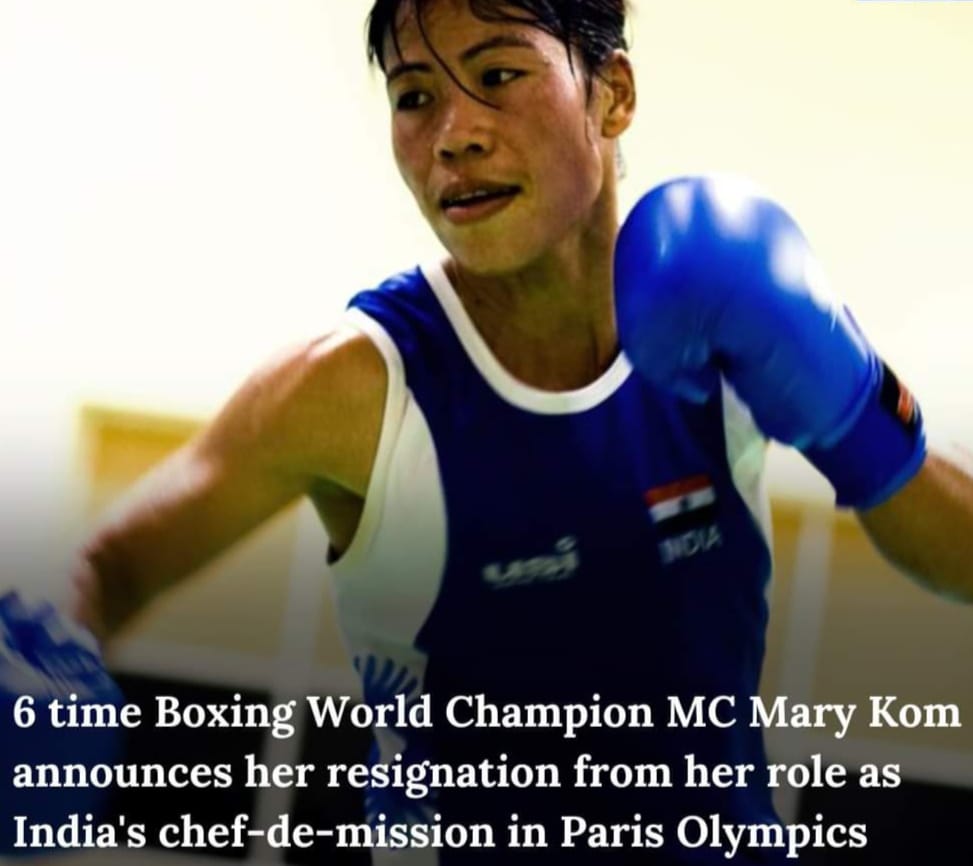 → Boxer MC Mary Kom steps down as Chef-de- Mission of the Indian contingent for the Olympic Games, citing personal reasons.
→ Boxer MC Mary Kom steps down as Chef-de- Mission of the Indian contingent for the Olympic Games, citing personal reasons.
→ India lose 1-3 against Australia in fourth hockey Test in Perth.
→ Punjab Police identifies the arrested Khalistan Zindabad Force (KZF) operative as Prabhpreet Singh Germany.
→ All the preparations for the Surya Tilak Mahotsav on the occasion of maiden Ramanavami at Shri Ayodhya Dham are completed. There will be darshan of Surya Tilak on 17th April Wednesday at 12:00 pm on Raghava’s head established in the womb home of Shri #RamTempleAyodhya which will be seen by devotees for about 5 minutes.
→ Goru Bihu was celebrated with traditional gaiety in Kokrajhar, Assam. Cattle owners take cattle to nearby rivers or ponds and given a proper bath. They are also smeared with pastes of black lentils and fresh turmeric.The cattle were also fed a combination of a few local vegetables including bottle gourd and eggplant for their healthy growth in the future.
→ Indian Army observes 40th Siachen Day: 13th April. ‘Four Decades of Valour at the Highest Battlefield on Earth’ #OperationMeghdoot. On 13 April 1984 #IndianArmy launched an operation on the world’s highest battlefield.Took the enemy by surprise, denying access to Siachen Glacier, leaving with no other option than to retreat!
→ Strawberry Festival begins in #Meghalaya. The aim is to encourage farmers for strawberry farming and promote agricultural tourism in the state. #StrawberryFestival #MeghalayaStrawberryFestival #Meghalaya Tourism
→ Festival of Baisakhi, a significant harvest festival, being celebrated with full enthusiasm, religious fervour today.On the auspicious occasion of Baisakhi, devotees drowned in the holy lake of Harimandir Sahib (Golden Temple) in Amritsar.
→ Telecom Regulatory Authority of India ( TRAI) releases its recommendations on encouraging innovative technologies, services, use cases, and business models through regulatory sandbox in the digital communication sector.These recommendations are expected to synergize the efforts of innovators, startups, telecommunications companies, government agencies, and regulators to boost innovation and start-up ecosystem.
→ A Delhi court seeks responses from ED and CBI on AAP leader and former Delhi Minister Manish Sisodia’s plea seeking interim bail.Special Judge directs the central probe agencies to file their replies by April 20, when the court is likely to take up the application for hearing.Sisodia moved the court, seeking interim bail to campaign for upcoming Lok Sabha polls.He is currently in judicial custody in connection with the Delhi excise policy scam case.
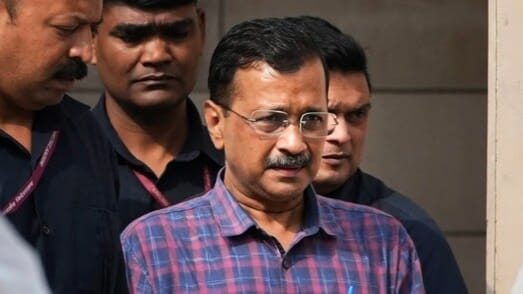
→A Delhi Court remands BRS leader K Kavitha to Central Bureau of Investigation (CBI) custody till April 15 in the alleged liquor policy scam.Special judge Kaveri Baweja of Rouse Avenue Courts passes the order after Kavitha was produced in court following her arrest by the probe agency yesterday. The CBI counsel says, Kavitha is one of the alleged key conspirators in the liquor policy case and is concealing facts which are exclusively in her knowledge.She was arrested on March 15 by the Enforcement Directorate in the money laundering case related to the excise policy case. Also tainted Delhi CM and AAP convenor Arvind Kejriwal is currently in Tihar Jail under judicial custody. He was arrested by the Enforcement Directorate (ED) last month in connection with the Delhi liquor policy case. His plea will be heard on 15 April.
 → Aam Aadmi Party alleges that a conspiracy is being hatched to impose the President’s rule in Delhi. Briefing media in New Delhi, senior party leader and Delhi Minister, Atishi said, the officers have stopped attending the Delhi government meeting.
→ Aam Aadmi Party alleges that a conspiracy is being hatched to impose the President’s rule in Delhi. Briefing media in New Delhi, senior party leader and Delhi Minister, Atishi said, the officers have stopped attending the Delhi government meeting.
IMPORTANT PERSONALITY: A humble tribute to Swatantraveer Savarkar
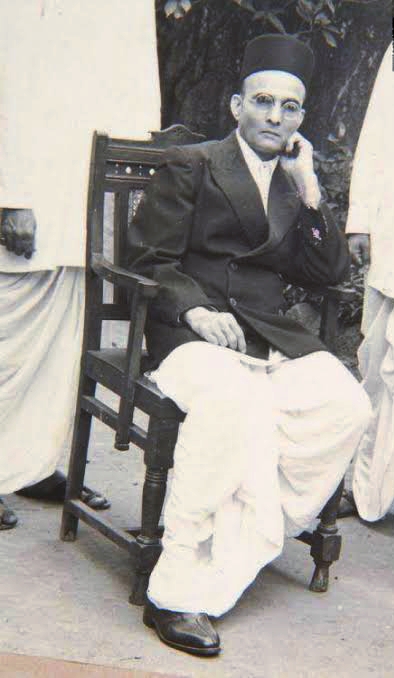
Enlightened Journalism of Swatantraveer Savarkar
The 141 birth anniversary of Swatantraveer Vinayak Damodar Savarkar is on 28 May 2024. It has been long 48 years since he left for his heavenly abode. Today, each passing day signifies his great vision and work. The fourth Swatantraveer Savarkar Vishwa Sahitya Sammelan (World Literature Conference) is being organized in Sydney this year.
But a very important aspect of Savarkar’s life is his journalism. Savarkar’s journalism was not only simple journalism but was very enlightening. He was not able to publish his own newspaper due to some inevitable circumstances. But he always presented some critical and far-sighted ideas through local, national and international available newspapers. On some occasions, he has even made pamphlets and published it. This is his style of journalism.
Journalism in childhood
On 28 May 1883, at 10 pm, a great man of Indian revolution Vinayak Damodar Savarkar was born in Bhagur village near Nashik. (Maharshtra, India). His primary education was at Bhagur and secondary education was at Nashik.
From childhood, Swatantraveer took help of writing to exhibit his intense thoughts. While studying in Nashik, he wrote two articles in two parts in the newspaper “Nasik Vaibhav”, under the title “Pride of Hindu Culture”.
A meeting was held in the year 1901 during the reign of King Edward VII. The chairman of this meeting praised King Edward “As father of all”. At the end of the meeting stinging questionnaires were circulated. These leaflets questioned, “If Edward is your father, and then explain relation between your father and mother?”
Journalism in college: Savarkar matriculated in December 1901 and in January 1902 he got admitted to Fergusson College in Pune. Here he established an effective group of contemporary youth with identical thought process. This group started a handwritten newspaper named “Aryan Weekly”. On topics like patriotism, literature, history and science, Savarkar wrote many stylish inspiring articles from this weekly. Some of the thought-provoking articles were found in some newspapers of Pune. One of the best article was “Saptapadi”. In this article, he stated about the stages that our nation underwent while evolution when it was invaded by other countries. To seek degree education, he desired to work as a sub editor or a compositer in the newspaper “Kal” whose editor was Shivrampant Paranjpe. But he did not receive a favourable reply; in the meantime his father-in-law helped him.
In 1902, Savarkar had written in the “Kal” newspaper, “Hindus are responsible for devastated Hindustan, if they want their glory back, they better remain Hindus”. These thoughts were future forecasted.
After graduation in December 1905, Savarkar went to Mumbai to study Law. During the study, he continued his campaign in Mumbai. He started writing articles in the Marathi weekly “Vihari” and he made that newspaper an mouthpiece of Abhinav Bharat. The circulation of “Vihari” started increasingly unlike contemporary weekly “Yugantar”, started in Bengal in 1906.
Journalism from England
Pandit Shyamji Krishnavarma, who lived in London for the Indian students who went to study in Europe, offered some scholarships. Savarkar got this scholarship, considering his application supported with recommendation and certificate by Lokmanya Tilak. On June 9, 1906, he travelled from Mumbai Harbor with the “Persia” boat to London.
Savarkar did not let himself be influenced by the society and culture of London. On the other hand, he started working hard for his nation. The University of Bombay revoked Sir Mangaldas Nathubhai Scholarship of Senapati Bapat on account of publication of booklet demanding home rules for India. On this Savarkar had asked a scathing question in his “London Newsletter” that, “My countrymen will fall into slavery, and that’s my scholarship, did Mangaldas Nathubhai assure this while offering the scholarship?” In London, he used tools such as pamplets, booklets and books to propagate his revolutionary ideas. In the first six months, he translated Joseph Mazzini’s autobiography into Marathi. Renowned newspapers in Maharashtra praised this book immensely.
Savarkar’s residence (Bharat Niwas) in London, always witnessed discussions and energetic debate of high quality on political philosophy. Newsletters sent to India by Savarkar echoed these discussions across the country. These newsletters were widely read in Maharashtra. To create an impact on international politics, Savarkar penned many articles on Indian affairs in “Galic America” a newspaper in New York. He translated these articles into foreign languages like German, French, Italian, Russian, Portuguese and also arranged it’s publication in their respective countries.
Weekly Talwar
“Talwar” (Sword) weekly was launched as the mouthpiece of Abhinav Bharat Sangh. In the first issue, in 1908, Savarkar had a close examination of the complexity of the Kail Canal politics, and in the next four-five years, Savarkar had a feasibility study of the feudal war in Europe. There is no such thing that we love to battle or fighting a guerrilla war with a secret organization. But when the violence is ruling, and it prohibits the propaganda of truth, it is only then that the secret organization and the guerrilla warfare’s actions are justified. As in this situation, armed resistance to violent power is the only one and the inevitable tool.
Savarkar further adds: “When the natural process of national and political evolution is suppressed by unjust forces, a common response is mandatory revolution. Hence this revolution which would crown truth and justice needs to be welcomed”. Finally, he concludes on a brighter note stating, “You run the state with the help of a composer and preach the constitutional agenda to us.” Where such phenomenon does not exist and the language of constitutional movement is a great misconception. If an agenda exists in a nation and it permits free/fair opportunity for a complete development of the nation, then the language of revolution in that nation would be a mere misdemeanour. You have snatched our guns, so we have picked pistols. You have denied us light, so we take support from the dark and now we are thinking on how to combine these chains in our dark place and weigh them down.” Eyeing this, Savarkar was lost in writing, publishing and spreading these inflammatory materials.
During the commemoration of the revolution of 1857, Savarkar presented a glorious newsletter titled “The Martyrs”. In this newsletter he stated, Martyrs! We accept your slogans and the flag hoisted by you would be always worshiped by us. On 10th May 1908, about hundred Indian students from different parts of Europe had gathered at Highgate for a meeting. These newsletters were circulated there and even many were mailed to India.
Savarkar’s Research Journalism
British government was indecent and committed atrocity in India. Madanlal Dhingra decided to answer their act with the assassination of Sir William Karzan Vayli on 1 July 1909. England and India both were shocked by this assassination.
In letter addressing this issue, Savarkar mentioned, “Since the matter of Dhingra is in court the meeting did not have any right to convict him or encroach as the authority of court.”
Police had withdrew the mercy petition of Dhingra from the court. But Savarkar had to release Dhingra’s statement before the execution of his punishment. Accordingly, he made printed copies of that statement; Verma went to Paris and circulated it to American and Irish news houses.
It was very difficult to publish this statement in a newspaper in England, but it was much needed. So Savarkar handed over a copy of this statement to his friend David Garnett. Garnet gave it to Robert Lid of the “Daily News” newspaper. The issue was published on 16 August and it shook the whole England. The police was defeated when the statement in their possession was made public.
A situation: weaker people like you cannot curb the uninterrupted progress of revolution, or will not be able to nail it down. If you attempt it, you will find that it’s an almost impossible task just like to see the force of gravity or change the circle of the earth”.
Book on freedom fight of 1857
“Book on freedom fight of 1857” written by Savarkar was banned by the government before its publication. Accepting this challenge Savarkar ridiculed the government through British, American and European newspapers. Finally Savarkar published the book in 1909 in Holland with the tittle “The Indian War of Independence of 1857”. Copies of this book reached safely to countries like Hindustan, France, America, Japan and China. Later this book was published in many languages.
“Free Hindustan” a Mumbai based newspaper covered Savarkar in special edition wherein writer K.F.Nariman revealed, it seems that the idea of the Azad Hind Sena, and Army of Rani of Jhansi, was inspired by Savarkar’s book. In the same issue, G.V.Subbarao from Bezwada editor of “Goshti” acclaimed the book with open arms. In the history of making history, Savarkar has to be termed as genius of new era, creator of revolution in the range of Rooso, Voltaire and Maazini.
Savarkar’s law suit
Savarkar’s, followers, friends and preachers were harassed. Cases were filed against them. Babarao Savarkar was sentenced to life imprisonment. As a revenge, angry youth Anant Kanhere shot A.M.T.Jackson, Nashik Collector on December 21, 1909. Savarkar was convicted in Jackson murder case. Therefore he left safe place like Paris and came to London so that he could stand face-to-face with the situation.
Savarkar was accused with 38 charges. The court proceedings lasted till 68 days and order was passed to seize all his assets along with life imprisonment at the black water. In the proceedings, the judges gave the transcript of Savarkar’s “Vande Mataram” newsletter. In this passage, Savarkar says, “To overcome bureaucracy, and to bring uproar of the masses, the campaign of political violence in different places is the best method in this situation.” The judiciary finally said in this verdict. “It has been proved to us that the accused has committed a crime promoting the war by facilitating the spread of printed literature and supplying explosives to the war.”
Life Imprisonment
Despite Savarkar’s right stand, the Justice Board sent him to another life imprisonment on January 30, 1911. Twice an unprecedented punishment of life imprisonment, freedom after fifty years, such a sentence was never imposed in the world. But Savarkar was not disturbed by this punishment, instead he quoted, “I am happy to enjoy the maximum punishment you have given as per your law. Because I am such a loyal person and my dear motherland would achieve the final victory in the way of such hopelessness and self-sacrifice.”
“Do you know me? These are just changed clothes. I am the same. The main purpose of the cloth is to save from winter, which can be achieved with these clothes also. If God has mercy, we shall meet again. If ever you are tempted by this common life, then think that, “Raising children and building the nests with four pillars together, if they term this as their world, then this is also done by birds like crows and sparrows. But if we have to make some sense to our worldly life, we also have to behave like human beings. You broke your four molecules, but by that time, there would be occasional smoke of smell of thousands of people in the front.” Savarkar, who stood so near to death after the horror punishment of two life imprisonments, had given this sermon to comfort his young wife.
Journalism from Andaman Prison
Savarkar did not give up after physical suffering, mental distress, affliction, and persecution at the prison. In this situation, he carried out journalism secretly.
When a note written by Savarkar for the news was caught, he was punished by hanging his hand. At that time Jailer Bari questioned him, “What is this?” Savarkar replied, “This is the postal expenses paid for the news” on that Bari said, “The news was too expensive for you?” Savarkar said, “No, at all! You pay news and postal charges. We get news for free! And these postal charges are paid twice a year.”
Revolutionaries InduBushan and Ullaskar’s thrilling stories of martyrdom had been published in Indian newspapers. The British officials were in shock due to this. The criticism from the press, the questions being asked in the central circle and the growing suppression of public, all strained the government. Finally in 1913, Sir Reginald Cradock visited Andaman, examined and spoke to prisoners. On November 16, 1913, Savarkar met Cradock. Cradok made great efforts to change Savarkar’s opinion, but he failed.
From all the provincial newspapers, Savarkar’s printed letters from Andaman received huge publicity.
Ratnagiri prison
In Ratnagiri jail, Savarkar completed immortal thesis on “Hinduism” and secretly sent it out of jail. Since Savarkar was in jail, it was released under the name “Maratha”. In this thesis, principles of Hinduism had been laid, and the whole movement of Hindu Nation along Hindu Politics is based on it.
Savarkar’s Release
Savarkar was released on some terms on 06 January 1924. Savarkar’s former colleague Shivarampant Paranjpe’s had a changed vision. The distorted transformation of the great revolutionary was noticed by Savarkar. Paranjape spoke to Savarkar about the new conceptual journal “Navakal”. At that time Savarkar responded, “I do not recognize, “Navakal” New Age. I know the old age”.
Untouchability Extermination
Savarkar’s untouchability extermination received support from Dr. Babasaheb Ambedkar’s ‘Janata’ newspaper. Prior to this, Savarkar had published a letter supporting Ambedkar followers Satyagraha for free entry in a temple at Nashik. Savarkar had requested all Hindus of Nasik to open the Kalaram temple for Hindu Dalit’s. Bhaurao Gaikwad distributed this letter to all upper class Hindus of Nashik.
Thakur Chandan Singh was a great fan of Savarkar. He translated articles of Savarkar and published it in ‘Tarun Gurkha’ (Young Gurkha), and ‘Himalayan Times’.
Scientific approach
Savarkar’s approach was completely modern, scientific and secular in nature. All that benefited mankind was good and that restricted its progress was bad, this was his thinking. Machines were not a curse but a boon. Savarkar harshly stated that unemployment is not a fault in machine but one in odd distribution.
In an article written on these issues, he has urged the Hindus to take a firm interest in science by describing the progress of the space technology of Russia. Savarkar concluded that science will be a boon if the objective of science is to be used not by human beings but by human well-being.
In 1935, Savarkar wrote a special article on idol worship in Kirloskar magazine. In this article he indicates, as there is religious idol worship, there is also intellectual idol worship. It has completely excelled in the test of intelligence. But people of your community seek blessings from the Samadhi (graves), it seems they bless with children. They like receiving gifts and if not given get annoyed. A sound mind may term all this as religious miss-belief.
Jitendra Nath sacrificed himself of starvation for proper treatment in jail, how wrong is this? Savarkar said in an article, what difference it makes if political prisoners are treated well? Still there would be vulnerability of terming yourself as prisoner? Even if sitting on the chair, you read fresh newspapers, you are prisoner of British.
“Today’s Tibet’s Fun & Folic” in this article, he explains his policy perspective. Ethical, Unethical things are unlike object sides which have square or triangle like structures, are together, of one print and triplicated. Else as noted in old books, all bad is bad and good is good; to establish this in human community is a wrong intrusion. The treatment that you feel is pure and beneficial, go for it. But it has to be followed by all; in all different circumstances also is a wrong belief.
Weekly Shradhanand
As complementary to his great work of social reform, a mean of communicating his opinion in secret on the prevailing politics, Savarkar started a weekly “Shradhanand” in Mumbai under the editorial of Dr. Savarkar. Many inspirational articles of Savarkar were published through this. Though these articles did not bear Savarkar’s name but the writing style, word placement and jaunar said it all. This weekly was very popular in the short span and its circulation was very high.
Savarkar Released
Savarkar was finally released on May 10, 1937, due to the efforts of Jamnadas Mehta leader of Democratic Party. After a long twenty-seven years, Savarkar made his debut in political life and struggles again.
Savarkar’s former colleague Virendranath Chattopadhyay was in Europe. He was rumoured to be communist. But the news circulated was Stalin government had shot them dead after he entered the patrol Trotsky. Savarkar was the only Indian leader, who had issued a newsletter about this and demanded the inquiry of Virendra Nath’s death. But both British and Russian government maintained silence on this issue.
After Subhash Chandra Bose disappeared mysteriously, Savarkar removed one newsletter, showed a different attitude than any other leader and said, “Wherever he may be, nation’s gratitude, inspiration and best wishes would encourage him. Where he may be placed, for Indian independence he would be giving his heart and soul, therefore I am left with no doubts.
Importance of Undivided Nation
Savarkar’s role was patriotic and had commercial attitude. In a letter dated August 10, 1942, he said, “He warned the government that the British Lok Sabha should declare that, India is independent and equal partner with Britain. Immediately bringing this declaration into action was the only solution to the current problem.
On August 26, 1942, in the Bombay Chronicle, a London correspondent wrote, Savarkar’s appeal to British public got a lot of publicity through their local newspapers. Times, Manchester Guardian, Daily Herald, News Chronicle, and Yorkshire Post, these popular newspapers reached the public indirectly.
Independence of India
The day of August 15, 1947 arrived. India got Independence. It was celebrated as a National Festival Day in the country. In the form of independent India, a great power was established in Asia. But due to the partition of the country, violence started in Punjab. Arson, murder, robbery and all kinds of crime were pitted. Immense population migrated. Unrest was observed in the country for some time.
Martyrdom of Mahatma Gandhi
On January 30, 1948, at 5.30 pm, on the path of prayer site, Nathuram Godse shot Mahatma Gandhi. With Gandhi’s assassination news the country started mourning and riots took place. On January 31, Savarkar removed one newsletter and said, “The news of Mahatma Gandhi’s untimely demise is a major shock. On this occasion, the people should stand with the independent central government of India and my request to public is give full support while maintaining order in the country.”
Savarkar’s bodyguard, Appa Kasar, personal assisstant Gajananrao Damle were arrested that very night within eight hours of Gandhiji’s demise.
Savarkar’s Arrest
All the sensible men had objectively condemned Gandhi’s murder actions. Savarkar had removed one newsletter a few hours before his arrest. Bhopatkar, member of the executive committee of Hindu Mahasabha declared a joint statement that condemned Mahatma Gandhi’s assassination, and totally backed it.
Savarkar further states in that letter, “As a Vice President of Hindu Mahasabha, I also agree with the feelings expressed by these leaders. Such criminal offenses either indulged in indignation or in mass rage, I consider it to be scornful everywhere.”
Savarkar later said in that newsletter: “In national revolution, the biggest enemy of the newborn nation is the mortal civil war. If our nation is surrounded by foreign enemies, then there is a very big danger from such a desertion. This is a strict warning from history that every nation lover should keep craved in their mind.
Flawless Freedom
The court proceedings went for 7 months totally 84 days and then on 10 February 1949 the verdict came. The judges declared their decision, “The allegations made against Vinayak Damodar Savarkar have not been proved and so he is not guilty. Therefore he is being acquitted. He is in jail. If there is no other reason, then he should be released immediately.”
Establishment of the Indian Republic
On 26th January 1950, under the presidency of Dr. Rajendra Prasad, the sovereign democracy of the Indian Republic came into existence. In the newsletter drawn on the occasion of Republic Day, Savarkar appealed Hindu youths to recruit themselves in large numbers in Indian fighting forces through Army, Navy and Air force. He further stated, “The strategic boundaries of our nation are still in our hands. You will not be able to make acquaintances with them only by sophistication. If such drift policies are kept, we might lose all that we have earned after massive freedom battles. The only way to keep your existence alive is to behave in the same way with others as they behave with us. If we want to keep your nation alive, make it successful, then Tit for Tat policy needs to be embraced.
Social and Script improvements
Due to restriction of participation in politics, Savarkar drew his attention to social reforms, script improvement, almanac improvement etc. On these topics, he wrote many articles from the newspapers, published books and delivered lectures in many places in Mumbai.
Savarkar was one among the few who tried to improve the urban script. He had contributed tremendously to the work of script-reform. Savarkar had brought the number of civilian printing presses from 250 to 80. Civilization is the most scientific class in terms of phonetics. Savarkar once again clarified it in a meeting in Mumbai.
“Need of National Almanac”, on this issue, he wrote two articles in Kesari newspaper in 1951.
Savarkar suggested appropriate Marathi words to many English words and also preached them. “Mahapour for Mayor”, “Arthsankalp for Budget”, “Doordarshan for Television”, “Doormudrank for Teleprinter” etc, such words instantly became common and were used everywhere.
Establishment of Maharashtra
On 1st May 1960, Maharashtra State came into existence. At that time, addressing the Marathi people, Savarkar had said, “I wish Maharashtra to be the hand with sword of India. There will be a day when the Chief Minister of today’s Maharashtra would hoist Independent, autonomous India’s flag beyond the horizon and would be Prime Minister of India.
Chief Minister Yashwantrao Chavan offered the title of the State’s poet to poet Yashwantrao and a military school was commenced in Satara. Savarkar congratulated Chavan for these two things. Marathi was decided as the language of administration by Government of Maharashtra. Savarkar also congratulated the state government for this.
Savarkar’s Soul Sacrifice
In an article written in 1965, he had described about the endless ebb he could see in front of his eyes. Savarkar said in that article, “Extremely disproportionately acute feeling of failure, bored of the crisis, as long as there is no desire to live happily, due to extremely insatiable mind-boggling situations, their actions usually are termed as suicides. But our living work, goal of life, the purpose of life is completely successful, such success, in the spirit of merit that ends our worldly achievement with joy, their work is called ‘soul-sacrifice’. This cannot be the highest perfection of any variable or ever in the developing world. All that was to be achieved is achieved, therefore nothing much duty remains. In charity of empty work, successful men would immerse their lives in eternity. They merge their mortal life into the eternal life of the universe.
Savarkar was now busy immersing himself. He decided to do self-sacrifice by making a long lasting hunger strike. He started this fast on 3 February 1966. It went on for 23 days. Finally at eleven in the morning on 26 February, at the age of 83, Savarkar sacrificed his body to death.
Savarkar’s Pride
All leaders around India, newspapers took note of the death of Savarkar and gave him a great tribute.
Savarkar faced most adverse circumstances, resided abroad on occasion, stayed in prison, went through hardships and did enlightening journalism, spoke his heart, continuous efforts were made for community awakening; this was all because of his untiring patriotism and foresight.
The ideas he put forward through his journalism are so clear and accurate that we can see looking at today’s global unrest.
Reference bibliography
1. Composite Savarkar literature: Volume 1, c. Classical Committee, Pune (1964)
2. Savarkar Biography (Bhagur), Majestic Publications (1972)
3. From Andamarni Andheri – V.D. Savarkar, Parchure Publications (1972)
4. My Birthplace – Vs. Da Savarkar, Parchure Publishing (1968)
5. Hindutva – V. Da Savarkar (Translation: Dr. NA. Savarkar), Prithviraj Prakashan (1971)
6. Explosive articles – V. Savarkar, Veer Savarkar Publications (1982)
7. Savarkar ideology – Dr. Arvind Godbole, Popular Prakashan (1983)
8. Philosopher Savarkar: Selective Think – Editor – Dr. Y. F.D., Marathi Fiction – Maha Koshak Mandal (1986)
9. Swatantryaveer Savarkar – writer Dhananjay Keer
10. Savarkar’s Rationalism and Hinduism – Author Sheshrao More
11. Swatantryaveer Savarkar Sahitya and Jivanmishtha – writer Balkrishna Kawhetkar
Swatantraveer Savarkar’s Course of Life
1) May 28,1883 : Born. Bhagur, District Nashik, State Maharashtra, India.
2) 1898: Death of Chaphekar, Savarkar administers armed revolution in front of Lord Almighty’s idol.
3) 1900: Founding of Friendship.
4) 1901: Got Married. Passed Matriculation Exam
5) 1902: Admitted to Ferguson College
6) 1904: MitraMela name change to the secret revolutionary organization named Abhinav Bharat.
7) 1905: Campfire of foreign clothes, BA Passed, birth of first son Prabhakar.
8) 1906: Went to England.
9) 1909: Life Imprisonment to Babarao, Madanlal Dhingra killed Karzan Violi. Prabhakar’s death, passed Barrister but the Justice Department refused to take the degree.
10) 1910-11 : Arrested, Marcelis jumped into the sea, seized property in Nashik and punishment of two life sentences
11) 1911: Send to Andaman
12) 1913: Predictability of the Andaman and Nicobar Islands
13) 1919: Yeshu Vahini’s (sister-in-law) demise, wife and younger brother visit in Andaman
14)1921: Shwarkar brothers are sent to India from Andaman.
15)1924: Conditional release from Yerwada jail. Located in Ratnagiri Establishment of Ratnagiri Hindu Sabha
16) 1925: Beginning of the eradication of untouchability,
Movement of language purification started. Daughter Prabha born
17)1927: Shradhanand weekly started, visit of Gandhiji-Savarkar at
Ratnagiri.
18) 1928: Birth of son Vishwas.
19) 1930: First manifested dinner in Ratnagiri.
20) 1931: Inauguration of the Patit Pavan temple (holy temple).
21) 1936: Demise of wife Yamuna Bai
22) 1937: Unconditional release, Ahmedabad Chairman of the Hindu Mahasabha, Chairman 1943 for every year and later for seven consecutive years.
23) 1938: President of Maharashtra Sahitya Sammelan, Mumbai. Bhagyanagar movement of unarmed resistance
24) 1943: 60th birthday celebrations, felicitated by the literatures, Chairman of the Marathi Theatre programme at Sangli.
25)1947: Gandhiji’s murder, arrest
26)1949: Burried from Gandhiji’s murder case
27)1952: Abhinav Bharat Samatya Sangitra at Pune.
28) 1956: President of Tilak’s Birth Centenary Celebration, Pune
29)1957: Celebrated centenary celebrations of the independence at Delhi. Felicitation and speech there
30) 1961: Immortality celebrations in Pune, Savarkar’s message of empowerment, the last talk of the manifesto.
31) 26 Feb. 1966: Death after twenty three days of fasting.



